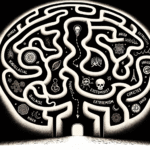
Introduction
In an age where conversations surrounding mental health and emotional well-being are increasingly prioritized, a silent crisis among men continues to loom large—a crisis often overlooked but deeply impactful. The topic of Masculinity in Crisis: Addressing Mental Health and Emotional Well-Being illuminates the burdens men face as societal expectations evolve while traditional notions of masculinity persist. This article aims to delve into the complexities of this crisis, offering insights, case studies, and actionable strategies that empower male emotional resilience. Understanding this crisis is not merely about recognizing the struggles; it’s about fostering an environment where men can express vulnerability as strength and actively seek mental wellness.
The Old Paradigms: Traditional Masculinity
The Historical Context
For centuries, traditional masculinity has been characterized by ideals such as stoicism, aggression, self-reliance, and dominance. Men were often socialized to suppress emotions and refrain from seeking help, creating a foundational block in mental health awareness. Recent studies reveal that these archetypes have not only limited emotional expression but have also intensified issues such as depression, anxiety, and even suicidal tendencies among men.
Case Study: The Impact of Stoicism in a Male-Dominated Workplace
A 2019 study conducted in a corporate environment showcased how traditional masculine norms led to a toxic culture affecting employee mental health. Male employees, conditioned to prioritize strength over vulnerability, frequently avoided mental health resources, contributing to a high rate of burnout and decreased productivity. This case exemplifies how adherence to outdated masculinity standards can propagate emotional distress within male populations.
The Modern Male Experience
Recent shifts in societal norms have ushered in a broader understanding of masculinity, yet paradoxically, many men still grapple with the pressure of “being a man.” As expectations evolve, a growing disconnect emerges. This dissonance often manifests in emotional struggles, making it imperative to address Masculinity in Crisis: Addressing Mental Health and Emotional Well-Being head-on.
| Aspect | Traditional Masculinity | Modern Masculinity |
|---|---|---|
| Emotional Expression | Suppressed | Emphasized |
| Help-Seeking Behavior | Avoidance | Acceptance |
| Roles and Responsibilities | Rigid | Fluid and diverse |
The table above illustrates this transition, indicating a movement toward a healthier engagement with emotions while simultaneously highlighting the struggle many men experience in adapting.
The Presentation of Emotional Well-Being in Men
Male Vulnerability: A Driving Force for Change
Opening up about emotional struggles cannot be seen as a weakness. Male vulnerability is a critical aspect of dismantling stereotypes that often accompany masculinity. By redefining vulnerability as an essential component of emotional strength, men can build deeper connections with others and foster a support system that encourages mental well-being.
Case Study: The Rise of Peer Support Programs
The establishment of peer support networks among men, such as Men’s Sheds, showcases this shift. These communal spaces allow men to share experiences and discuss emotional health openly, breaking the stigma surrounding vulnerability. Participants report enhanced emotional health and a renewed sense of community, underscoring the importance of solidarity in addressing Masculinity in Crisis: Addressing Mental Health and Emotional Well-Being.
Mental Health Statistics: The Unseen Toll
While conversations about mental health have gained traction, alarming statistics demonstrate the ongoing struggles men face. According to the CDC, males are 3.5 times more likely than females to die by suicide. Additionally, men are less likely to seek help for mental health issues, often due to fear of judgment or societal expectations.
| Mental Health Facts | Statistics |
|---|---|
| Male Suicide Rate | 3.5 times higher than females |
| Percentage of Men Seeking Therapy | Less than 30% |
| Common Symptoms Reported | Depression, anger, substance abuse |
The above statistics illuminate the gravity of the situation. Understanding these figures can catalyze action and advocacy for change.
The Necessity of Emotional Literacy
The Core of Emotional Well-Being
Emotional literacy is essential for addressing the inequalities men face in mental health. The ability to identify, understand, and express emotions is crucial for personal healing and relational health. Programs focusing on emotional literacy can help dismantle the barriers created by traditional masculine norms.
Real-World Application: Educational Initiatives
Educational programs that include emotional literacy in school curriculums offer boys the tools necessary to express themselves. A pilot program in a New York school district, aimed at integrating emotional health into the academic framework, resulted in a notable decrease in behavioral issues and increased emotional awareness among boys. This initiative reinforces the idea that early intervention is key in tackling Masculinity in Crisis: Addressing Mental Health and Emotional Well-Being.
Resources and Techniques for Improvement
Several techniques can nurture emotional literacy, including:
- Mindfulness Practices: Encouraging men to engage in mindfulness exercises helps mitigate stress and fosters emotional awareness.
- Counseling and Therapy: Normalizing the use of mental health services and highlighting their benefits empowers men to seek help.
The Role of Society and Culture
Shifting Narratives: Media’s Responsibility
The media significantly influences perceptions of masculinity. Positive representation of men seeking help or displaying vulnerability can dismantle harmful stereotypes and reshape societal expectations. Recent films and shows that portray male characters grappling with emotions contribute to a broader acceptance of diverse masculinities.
Case Study: "This is Us"
The television show “This is Us” garnered praise for its vulnerability among male characters, showcasing their emotional struggles and willingness to seek help. Viewers have reported that they’ve felt encouraged to embrace their vulnerabilities, highlighting how media can play a transformative role in promoting healthier definitions of masculinity.
Community Engagement: Creating Safe Spaces
Community initiatives that provide safe spaces for men to discuss emotions and mental health—such as workshops, discussions, or support groups—foster a culture of openness. By rallying around the common objective of emotional well-being, men can collectively mitigate the stigma associated with expressing feelings.
Moving Toward a Healthier Masculinity
Redefining Success and Fulfillment
Challenging traditional concepts of success—often linked to achievement, power, and control—opens new avenues for men to explore what fulfillment truly means. Encouraging goals centered on emotional depth, relational satisfaction, and personal growth can redefine how success is perceived.
Practical Strategies for Individuals
- Practice Self-Care: Men should prioritize self-care routines that include physical, emotional, and mental health activities.
- Foster Open Communication: Encouraging dialogue with peers can allow men to express their concerns and needs.
- Role Models and Mentorship: Engage with positive male role models who exemplify healthy emotional practices.
Conclusion
The journey through Masculinity in Crisis: Addressing Mental Health and Emotional Well-Being is not merely an exploration of pain; it is a journey towards empowerment, connection, and resilience. By rewriting narratives around masculinity, men can disrupt harmful cycles and begin a transformative movement toward nurturing emotional well-being. As we cultivate environments where vulnerability is celebrated and mental health is prioritized, we pave the way for a future where all men can thrive emotionally and psychologically.
FAQs
1. Why is masculinity in crisis?
Masculinity is in crisis due to conflicting societal expectations, leading to emotional suppression and increased mental health issues among men.
2. How can men address their emotional health?
Men can address their emotional health by seeking counseling, engaging in peer support groups, and practicing emotional literacy techniques.
3. What role does society play in shaping masculinity?
Society influences masculinity norms through media representation, cultural expectations, and socialization practices that dictate how men should behave.
4. Are there effective therapies specifically for men?
Yes, therapies focusing on cognitive-behavioral approaches, group therapy for men, and emotional literacy training have shown positive results.
5. How can friendships support men’s mental health?
Friendships that encourage open communication provide essential emotional support, fostering a sense of belonging and reducing feelings of isolation.
In conclusion, by addressing Masculinity in Crisis: Addressing Mental Health and Emotional Well-Being, we can unlock the potential for men to embrace their emotional selves and cultivate healthier relationships with themselves and the world around them. The path forward is paved with understanding, courage, and commitment to change.

















